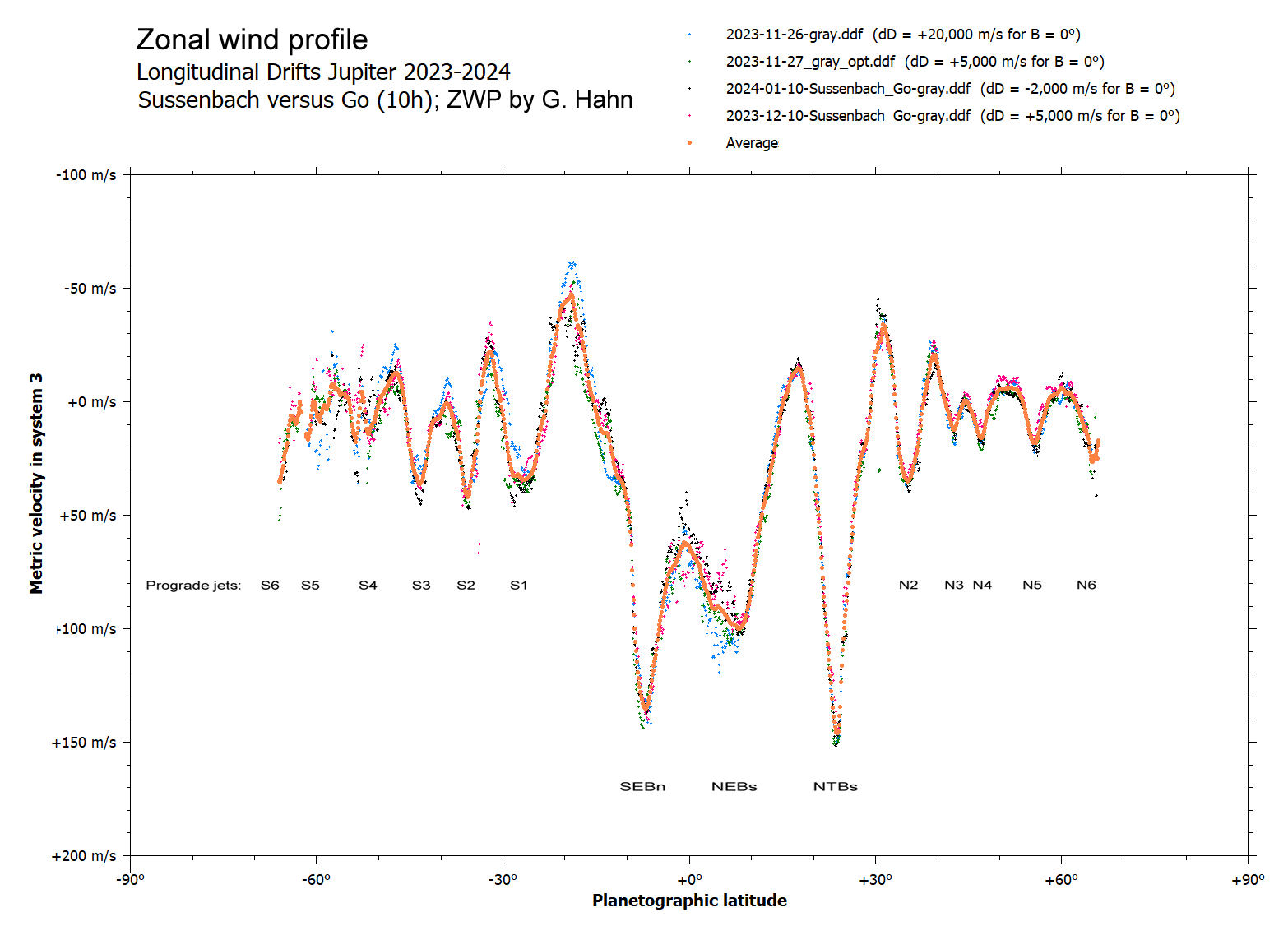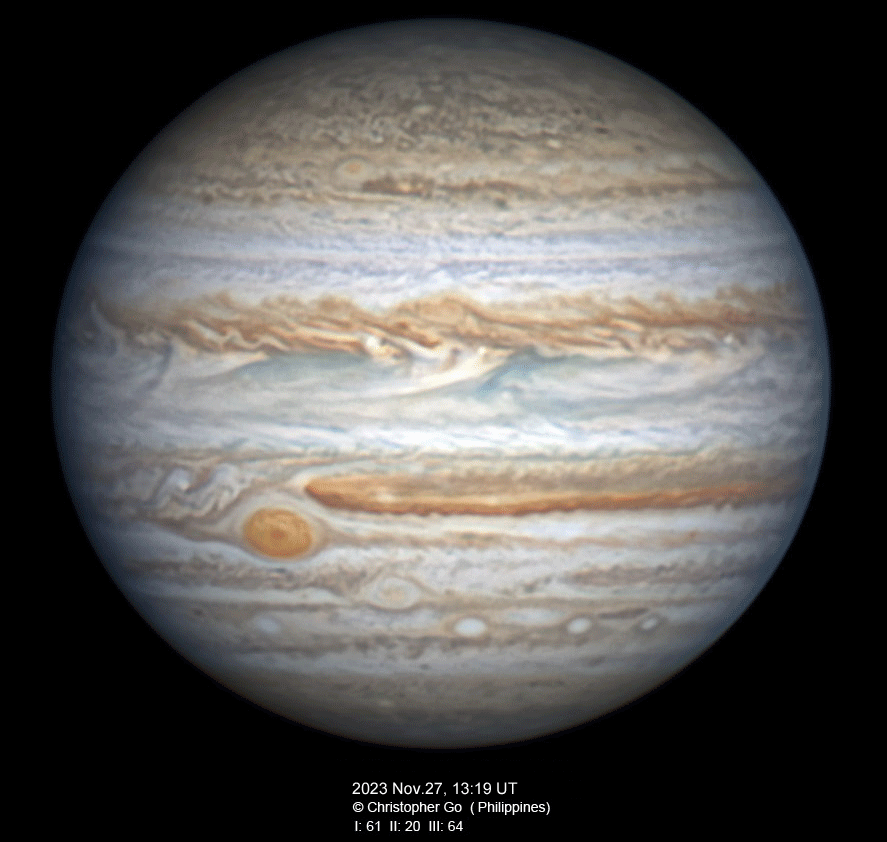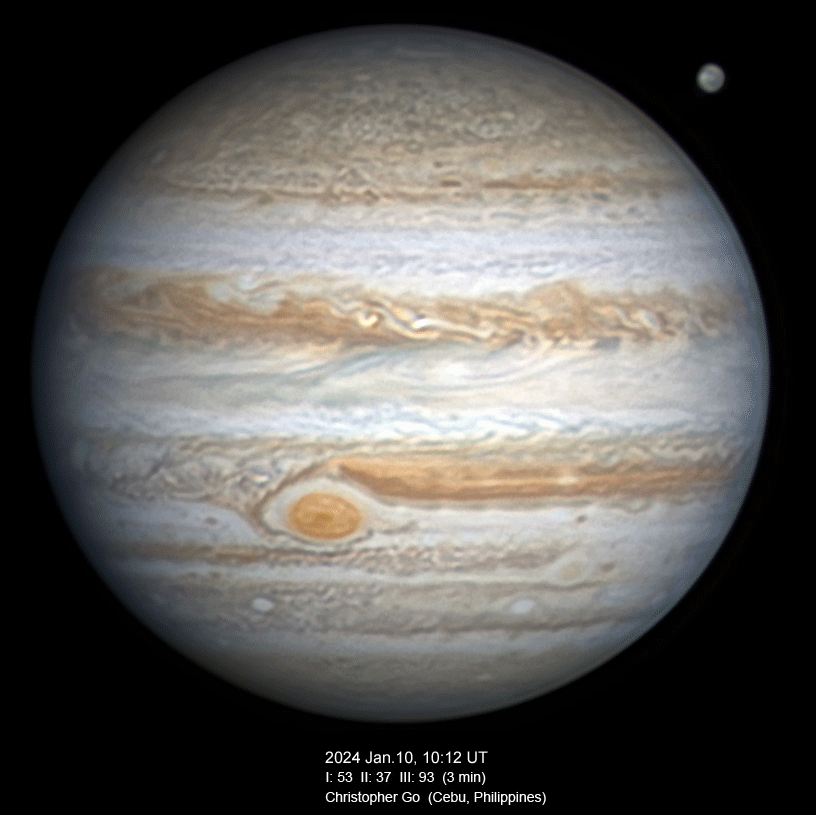Report no.3: The major jets
Jupiter in 2023/24, Report no.3: The major jets
John Rogers, Gianluigi Adamoli, Rob Bullen, Michel Jacquesson, Hans-Joerg Mettig (BAA & JUPOS team).
(2024 Jan.14)
This apparition’s Report no.1 described the features of Jupiter up to opposition, but only gave limited information about the variations in the major jet streams. Here we present details of the present structures and speeds of the jets – NTBs, NEBs & EZ, SEBn, and SEBs — most of which show unexpected and perhaps important variations.
In summary:
NTBs jet: The jet is approaching its superfast state, so a new dramatic outbreak is expected in 2024 or 2025.
EZ: The Equatorial Current (velocity minimum) is exceptionally slow, marked by rarely-seen small grey spots.
SEBn jet: Faster speeds have developed, forming a pattern with fast speeds following the putative S. Equatorial Disturbance and slower speeds preceding it, confirming the pattern seen in earlier years. A preliminary review of SEBn speeds from all years shows that they tend to fall into 2 or 3 distinct ranges, but the fastest range, usually present up to 2016, has not been observed since.
SEBs jet: The wave-trains on the SEBs jet, with wavelengths ranging from 3.5 to 5.4 deg.long., and phase speeds that confirm and extend the relationship that we have published previously.
The full report is here as a PDF: Report-no-3_Jets in 2023_final
Appendix 1 (included in the report) summarises previous data on these jet streams.
Appendix 2 (posted on 2024 Feb.23) presents zonal wind profiles produced by Grischa Hahn from image pairs by Eric Sussenbach and Chris Go, such as those shown at the bottom of this page. The report is here: Report-no-3_Appx2_ZWPs
and the full-size ZWP figure is here (a version without the superimposed average is available on request): 
Animations-1 & 2 (below) show the global patterns of eastward and westward wind patterns very clearly. Anim-1 is a blink pair of v-hi-res images taken one rotation apart on 2023 Nov.27 – the most closely coincident of many such pairs obtained by Eric Sussenbach and Chris Go from Nov.26 to mid-Dec. Anim-2 is a similar blink obtained on 2024 Jan.10.


| The British Astronomical Association supports amateur astronomers around the UK and the rest of the world. Find out more about the BAA or join us. |
